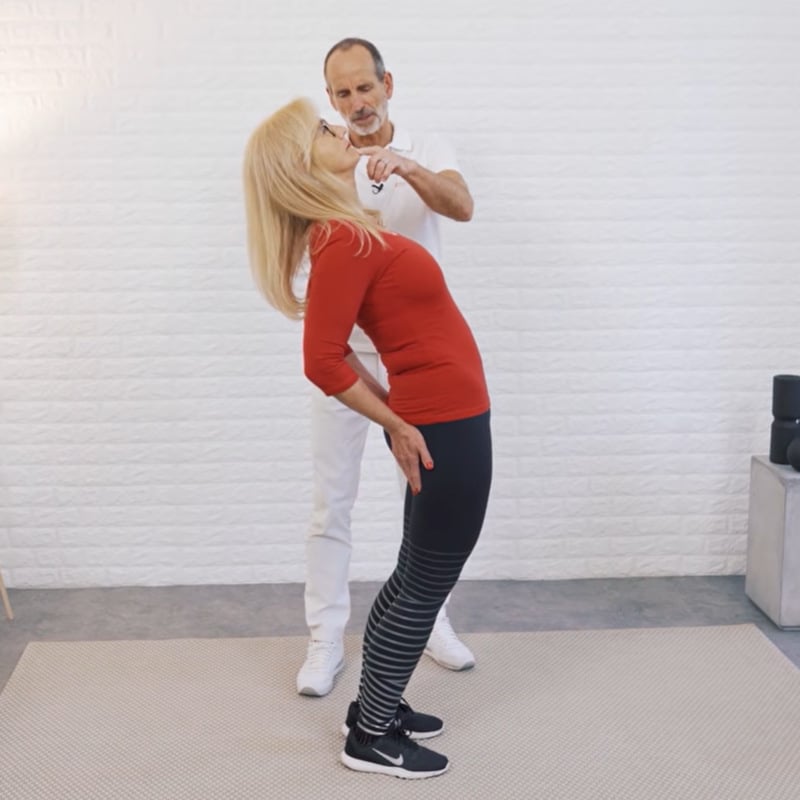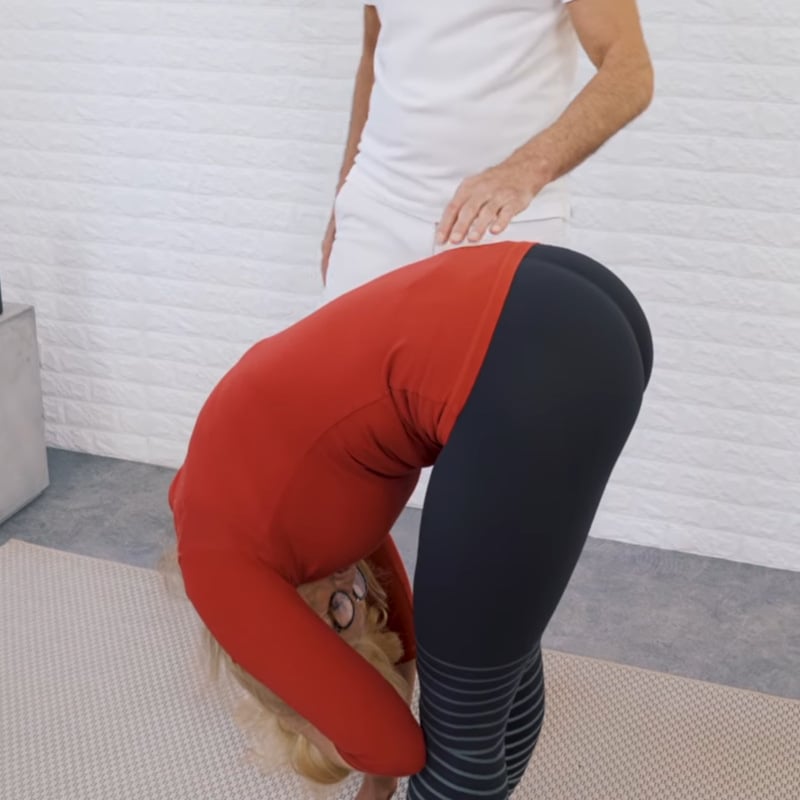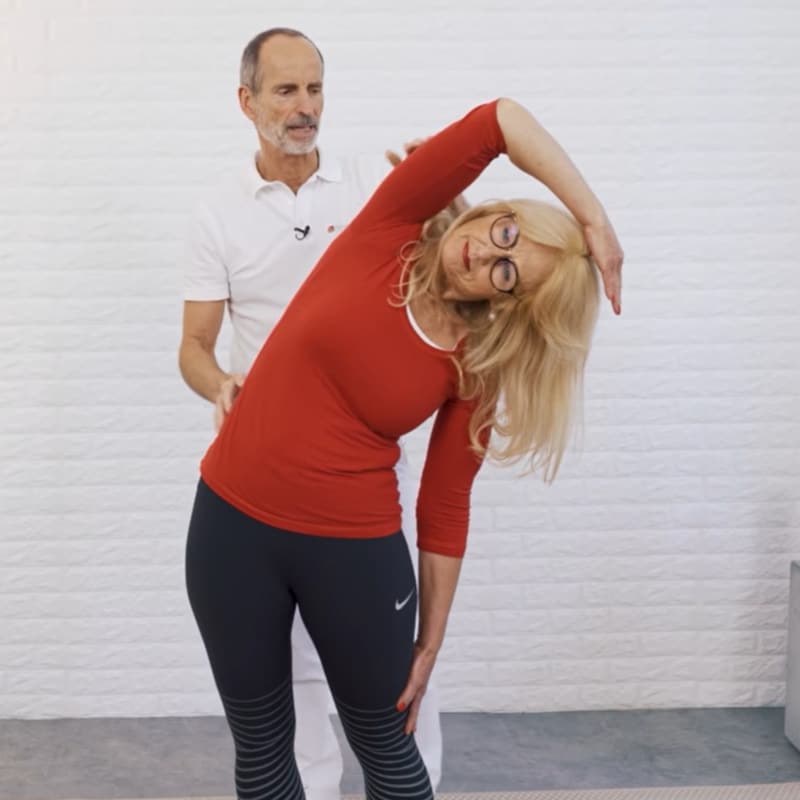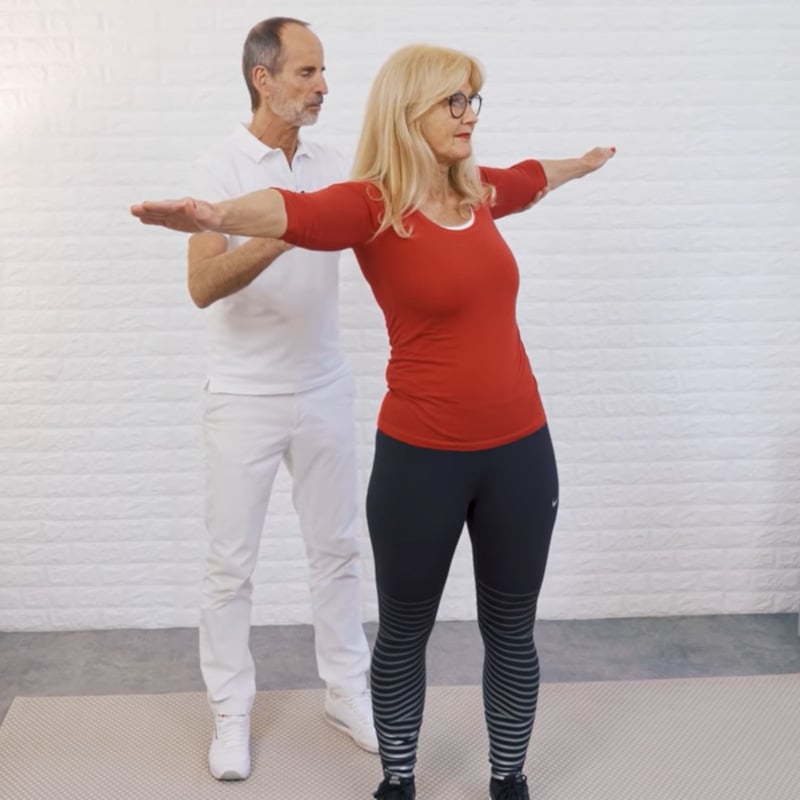Spondylosis Therapy: Three Stretch Exercises
Spinal health is not down to your age or bodyweight, it’s primarily the product of a varied range of healthy movement. These three pain therapy stretching exercises are thus designed to stop spinal wear and tear by relieving the muscular-fascial pressure on your vertebral joints and intervertebral discs. This creates optimal conditions to promote the revival of your body’s regenerative processes.
Don’t panic if the exercises initially seem to increase your pain: Your musculoskeletal system, indeed your whole body, will gradually adapt. If you continue to feel worse after the workout, your body is signaling an exercise overload. So take a break for a couple of days; dial down a little on your pain scale; then aim to gently coax your body back towards your eight or nine pain marker—in very small increments.
Fight Pain with Information.

Subscribe to The Pain Relief Advisor
Sign up for our free newsletter and discover how to manage your pain yourself. Every two weeks, we’ll deliver follow-along videos and articles to your inbox.
Step 1 — Muscle-Fasciae Stretches

Exercise 1: Stretch Your Spine & Open Your Hip Flexors
- Stand with your feet hip-width apart, placing your palms on your lower buttocks at about hip level.
- Now push your groin forward while using your abdominal muscles to pull your pubic bone upwards. Keep your head level all the while, and look straight ahead.
- Take slow, deep breaths in and out, and with each exhale, push your groin further forward and allow your body to go deeper back into the stretch.
- Your breastbone will now protrude further forward, but don’t allow your head to extend too far back—your chin should not move too far away from your breastbone.
Tip: If you feel you can’t balance, try holding onto a sturdy chair with one hand.
- Last of all, allow your head to move back a little further slowly. You should now feel this stretch extend from your thighs, across your stomach and chest, and right up to your cervical spine.
- Release: After 2-2½ minutes, straighten up slowly (vertebra by vertebra): Move your head first, followed by your thoracic and lumbar spine regions.
- Finish off with a countermovement: Make a strong hollow back and bend your trunk forward—place your hands on your thighs for support as you do this. And now, ease out of your hollow back by leaning further forward and down (don’t push your back up). Get as far down as you can, before finally rounding your back completely. Then use your hand(s) to bring your head against your breastbone.


Exercise 2: Stretch Your Muscles Sideways
(A) Right side:
- Standing up straight, bring your right arm up and over your head with your elbow bent. Now allow your right hip to move to the right while you lean over to the left side. (Your upper body is now leaning to the left, while your hips are protruding to the right.) Support yourself with your left hand placed on your left leg—you’ll probably find this happens automatically.
- You can now also lean your head over onto the left side of your neck.
- Breathing slowly and calmly, move a little deeper into the stretch with every breath you take.
(B) Left side:
Start as before, but bring your left arm up over your head. Allow your left hip to move to the left, and your upper body to lean to the right. Then, let your head lean over to the right side of your neck. Increase the stretch each time you exhale.

Exercise 3: Rotate Your Spine
- Stand with your feet hip-width apart, and stretch your arms straight out, so they are aligned with your shoulders.
- Try to steer your belly button to the left, while keeping your hips pointing straight ahead.
- This will rotate your breastbone to the left—feel how your arms also start to turn with you. Remember to keep your pelvis squarely facing the front.
- Extend your left arm to the left as far as possible. Then, still keeping your pelvis nice and straight, let your right arm bend and follow your left.
- Now turn your head to the left, and let your eyes focus in that same direction.
- Breathing deeply in and out, try to stretch further to the left as you exhale. Do this three times.
- Now return to your starting position and rotate your back to the right in the same manner.
Did this contribution help you?
Then we would be happy if you shared it with your friends:
Fight Pain with Information.

Subscribe to The Pain Relief Advisor
Sign up for our free newsletter and discover how to manage your pain yourself. Every two weeks, we’ll deliver follow-along videos and articles to your inbox.


